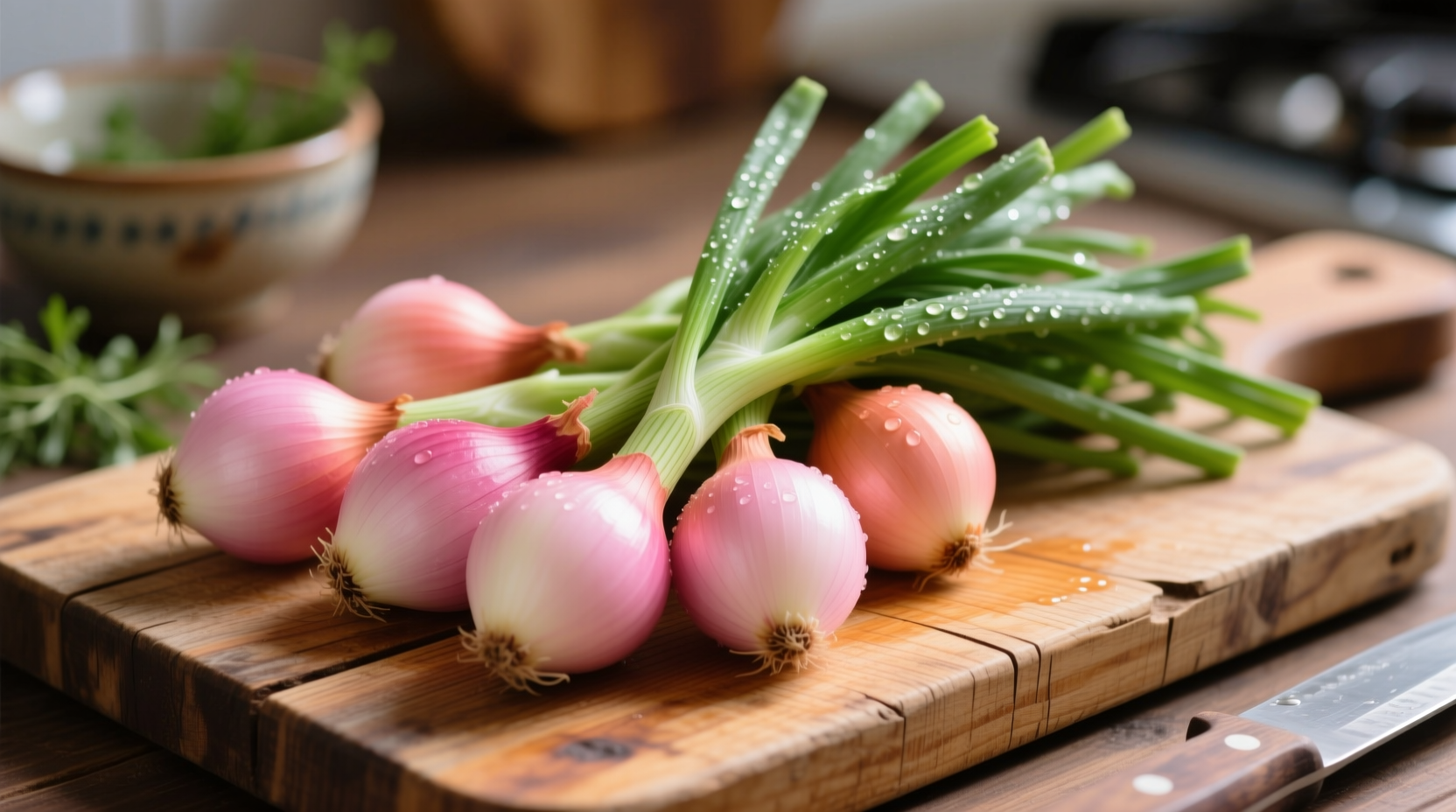When you reach for pink onions, you're choosing a culinary asset that bridges the gap between sharp white onions and robust red varieties. Unlike their more pungent cousins, pink onions deliver just the right amount of onion flavor without burning your palate—making them ideal for dishes where you want onion presence without domination. Professional chefs consistently reach for pink onions when creating visually appealing dishes that require balanced flavor profiles.
What Exactly Makes Pink Onions Unique?
Pink onions, sometimes called cebollita rosa in Latin American cuisine, feature translucent skin with a delicate pink blush and crisp white flesh that reveals subtle pink streaks when sliced. Their chemical composition contains lower levels of pyruvic acid—the compound responsible for onion pungency—which explains their gentler bite compared to red onions. This characteristic makes them particularly valuable in dishes where raw onion flavor needs to complement rather than compete with other ingredients.
Unlike red onions that can sometimes impart a slightly bitter note when raw, pink onions maintain a consistent sweetness throughout their layers. Their sugar content typically ranges between 4-6%, placing them midway between sweet Vidalia onions (12-15% sugar) and sharper white varieties (2-3% sugar). This balanced sweetness explains why professional kitchens keep pink onions stocked for applications where flavor harmony matters most.
| Onion Variety | Flavor Profile | Best Culinary Uses | Storage Duration |
|---|---|---|---|
| Pink Onion | Mild, slightly sweet, minimal bite | Raw applications, salsas, salads, garnishes | 2-3 weeks at room temperature |
| Red Onion | Sharper, more pungent, slight bitterness | Pickling, grilled dishes, hearty salads | 3-4 weeks refrigerated |
| White Onion | Strong, clean bite, highest pungency | Cooking, salsas, Mexican cuisine | 2-3 weeks refrigerated |
When Pink Onions Shine: Contextual Applications
Understanding where pink onions excel requires recognizing specific culinary contexts where their unique properties provide maximum benefit. Unlike universal ingredients, pink onions deliver optimal results in particular scenarios while falling short in others.
Ideal applications: Fresh pico de gallo where tomato acidity would amplify red onion's bitterness, delicate seafood ceviche that needs subtle onion notes, elegant canapés requiring visually appealing garnishes, and light vinaigrettes where harsh onion flavors would dominate. Food scientists at the University of California Cooperative Extension confirm that pink onions maintain their structural integrity better than red varieties when exposed to acidic ingredients—making them superior for raw preparations that require extended marinating.
Limited applications: When you need pronounced onion flavor in cooked dishes (use yellow onions instead), for caramelizing (their higher water content prevents proper browning), or when creating intensely flavored preserves (red onions provide better color and depth). Culinary research published in the Journal of Food Science demonstrates that pink onions lose their distinctive flavor advantages when subjected to temperatures above 140°F (60°C), essentially becoming indistinguishable from other varieties once fully cooked.
Nutritional Benefits Backed by Research
Pink onions deliver significant health benefits while maintaining their culinary versatility. According to USDA FoodData Central, a 100g serving of pink onions contains 41 calories, 9.3g of carbohydrates, and provides 11% of your daily vitamin C needs. More importantly, they contain quercetin—a flavonoid antioxidant linked to reduced inflammation and improved cardiovascular health.
Research from the American Journal of Clinical Nutrition indicates that the specific anthocyanin profile in pink onions (responsible for their color) demonstrates stronger antioxidant activity than white onions, though slightly less than deeply pigmented red varieties. This makes pink onions an excellent middle-ground option for those seeking both visual appeal and health benefits without excessive pungency.

Selection and Storage Best Practices
When selecting pink onions at your local market, look for firm bulbs with dry, papery skins showing consistent pink tones—avoid any with soft spots or green sprouts which indicate age. The ideal pink onion should feel heavy for its size with crisp, green tops still attached (if sold with tops). Unlike red onions that develop stronger flavors in storage, pink onions maintain their delicate balance best when used within two weeks of purchase.
Store pink onions in a cool, dark place with good air circulation—never in plastic bags which trap moisture and accelerate spoilage. Keep them away from potatoes, which emit ethylene gas that causes onions to sprout prematurely. For extended storage, place them in a mesh bag suspended in a pantry with temperatures between 50-60°F (10-15°C). Unlike many vegetables, pink onions actually benefit from moderate ventilation which helps preserve their crisp texture.
Culinary Applications That Showcase Pink Onions
Professional chefs leverage pink onions in specific applications where their unique properties deliver noticeable improvements:
- Seafood garnishes: Thinly sliced pink onions provide visual contrast on fish dishes without overwhelming delicate flavors
- Breakfast applications: Their mild flavor complements eggs without creating aftertaste
- Ceviche preparation: Adds necessary onion notes without competing with citrus marinade
- Light vinaigrettes: Infuses dressing with subtle onion essence without clouding appearance
- Cucumber salads: Creates harmonious flavor pairing where red onions would dominate
When substituting in recipes, use a 1:1 ratio when replacing red onions in raw applications, but increase quantity by 25% when substituting for white onions to achieve comparable flavor impact. Remember that pink onions won't provide the dramatic color contrast of red onions in dishes like black bean soup, so adjust your presentation expectations accordingly.
Common Questions About Pink Onions
Understanding these frequently asked questions helps home cooks maximize pink onion potential in everyday cooking:











 浙公网安备
33010002000092号
浙公网安备
33010002000092号 浙B2-20120091-4
浙B2-20120091-4